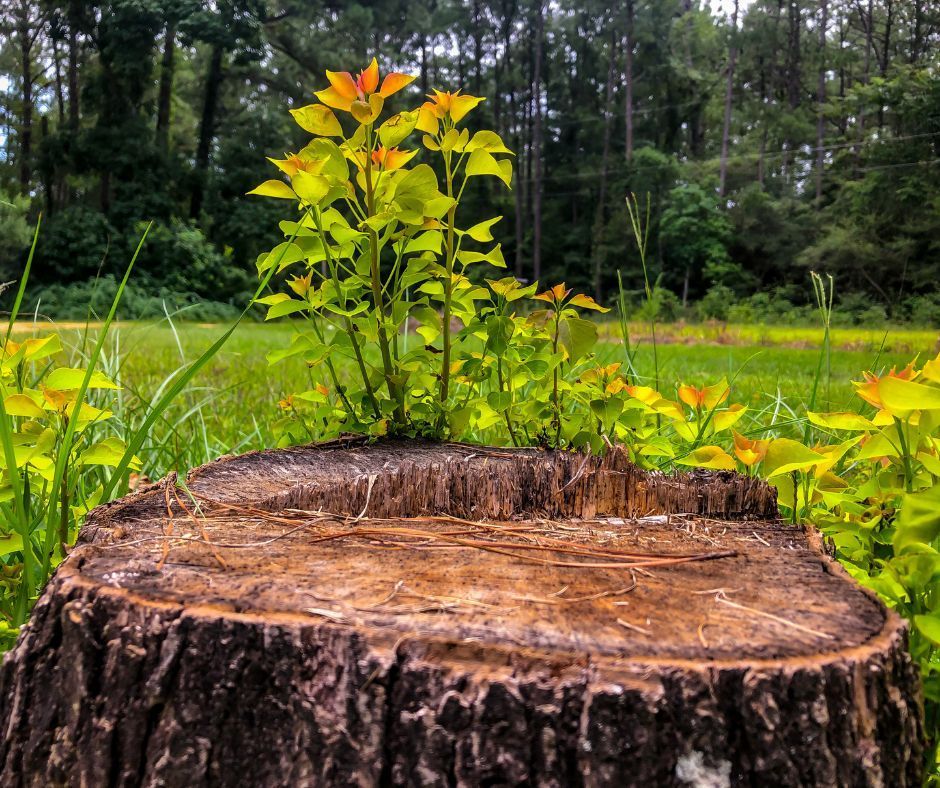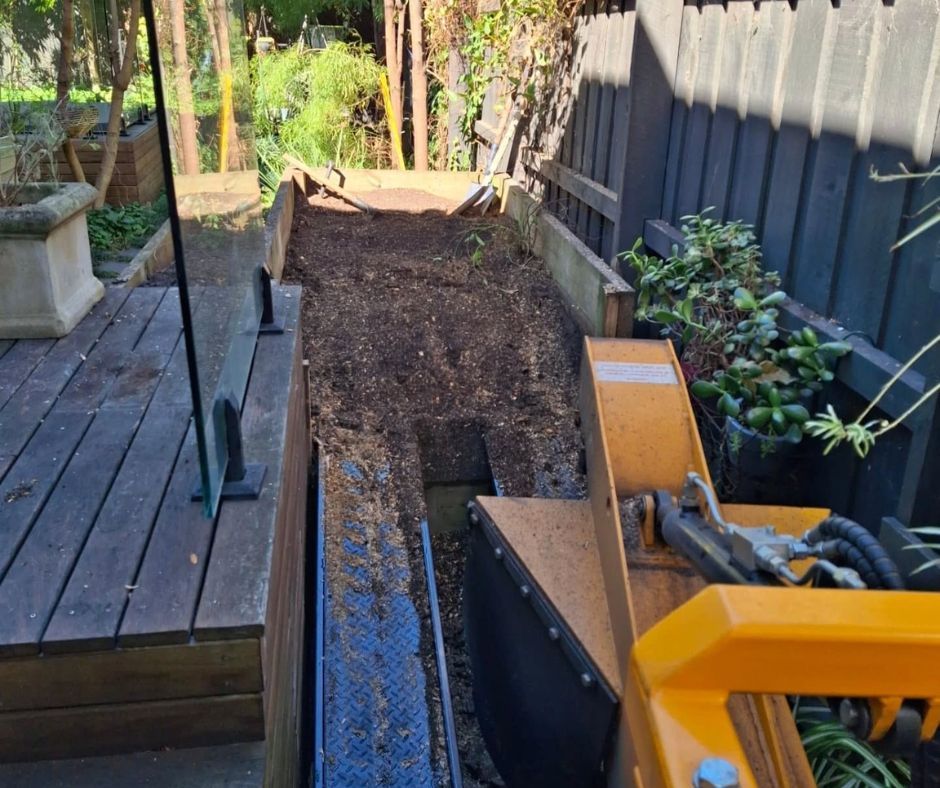Got Mulch from Stump Grinding? Here’s How to Use It
Stump grinding leaves behind a trail of wood chips that looks messy at first glance. While most find mulch to be waste, you can actually use it for your garden!
This guide will cover exactly what mulch from stump grinding is and how you can use it safely and effectively. If you're still weighing up the pros of grinding, here's a helpful breakdown.
What is Stump Grinding Mulch?
One of the benefits of stump grinding is the wood chips. The by-product woodchips is the material produced when a tree stump is removed using a mechanical grinder. Instead of hauling away the remains, the stump and surface roots are ground into coarse, untreated woodchips mixed with bark, small root fragments and some soil, which can then be used as mulch.
This mulch from stump grinding is entirely organic and free from chemicals, making it a natural byproduct of the stump removal process. While it's not refined like commercial mulch, its rough texture and nutrient-rich content make it useful in various landscaping and gardening applications.

Benefits of Reusing Stump Mulch in the Garden
When used correctly, stump grinding mulch can do a lot of wonders in improving soil health. It's a sustainable option for homeowners looking to repurpose unsightly stumps into something beneficial for their garden or yard.
Organic Breakdown
Stump grinding mulch breaks down gradually, adding valuable organic matter to the soil. Over time, this helps build a richer, more fertile foundation for your plants.
Better Soil Conditions
As the mulch decomposes, it loosens compacted soil and encourages better airflow underground. This helps roots spread more easily and improves drainage in heavy soil.
Moisture Retention
Mulch keeps water in the soil longer by acting like a lid on your garden beds. It reduces how often you need to water, especially during dry spells.
Temperature Buffer
A good mulch layer shields plant roots from harsh temperature swings. Whether it’s a cold, rainy winter or blazing sun in summer, your plants stay protected.
Natural Weed Control
A thick blanket of mulch blocks sunlight, making it harder for weeds to grow. That means less time spent weeding and no need for chemical sprays.
Saves You Money
No need to buy commercial mulch when you’ve already got a pile ready to use. It’s a simple way to cut down on garden costs.
Eco-Conscious Solution
Using stump mulch means reusing what you already have at hand. It’s a smart move that keeps green waste out of the landfill.
Supports Plant Growth
Healthier soil leads to stronger, more resilient plants. When mulch improves the ground they grow in, your garden gets better results with less effort.

What to Do with Mulch After Stump Grinding: 7 Practical Ideas
Not sure what to do with mulch after grinding? Here are seven practical ways to reuse mulch from stump grinding:
1. Backfill the Hole Left Behind
Mix mulch with topsoil and fill in the hole where the stump once stood. This helps level your yard and avoids an unsightly-looking hole in your yard.
2. Add It to Your Compost Pit
Woodchips are a slow-release carbon source, great for balancing green waste. Just make sure to mix it well and give it time to break down.
3. Lay Garden Paths or Walkways
Use stump grindings as rustic path filler. It's cost-effective and blends nicely with natural surroundings.
4. Landscape Around Trees or Shrubs
Spread mulch under trees, bushes or ornamental plants. It keeps moisture in and weeds out, no chemicals needed.
5. Erosion Control on Sloped Areas
Apply mulch on inclines to prevent soil runoff. The fibrous texture grips the ground and decreases the water impact on the soil.
6. Insulate Garden Beds
Add mulch over veggie patches or flower beds to regulate soil temperature and hold in moisture during hot or frosty weather.
7. Suppress Weeds Naturally
A thick layer of stump mulch can stop weeds from sprouting. You’ll save hours pulling them out by hand.
Is Stump Grinding Mulch Safe for Gardens?
The short answer is yes but with a few basic precautions.
Avoid using fresh mulch directly in veggie beds, as it can temporarily reduce nitrogen in the soil. Let it age for a few months or mix it with compost to balance things out. It would also be beneficial to always check for pests or pathogens if the tree is diseased.

How to Use Mulch from Stump Grinding Safely
Stump mulch is only as effective as how you use it. If you’re wondering what to do with mulch after grinding, these simple steps will help you make it work for your garden.
1. Collect and Prepare the Wood Chips
Start by raking the mulch into a pile and shovelling it into a wheelbarrow. Remove any grass, stones or leftover root clumps to avoid spreading unwanted pest or disease across your garden.
2. Prepare the Soil
If the soil looks dry or depleted, add a layer of compost before mulching. This gives your plants a nutrient boost while the wood chips slowly break down.
3. Apply the Mulch
Spread the mulch in a layer about three to six inches thick, keeping it a few inches away from plant stems and tree trunks. If the chips are too coarse, you can mix in finer mulch or bark for better coverage.
4. Maintain the Mulch and Plant Health
Over time, mulch can tie up nitrogen in the soil, so apply a high-nitrogen fertiliser if your plants start to look tired. Keep an eye on the layer and top it up as it breaks down to maintain all the benefits.
Got Unsightly Stumps in the Way? Let Get Stumped Melbourne Clear it All Out for You!
Get Stumped Melbourne is ready to clear those leftover stumps, quickly and with minimal disruption to your yard. You’ll be left with a pile of mulch you can reuse or let us take care of.
We service residential and commercial properties across Melbourne and nearby suburbs, offering both professional stump grinding and full stump removal.
Call us today and turn that stump into something useful!
Reach out today for a free, no-obligation quote!




